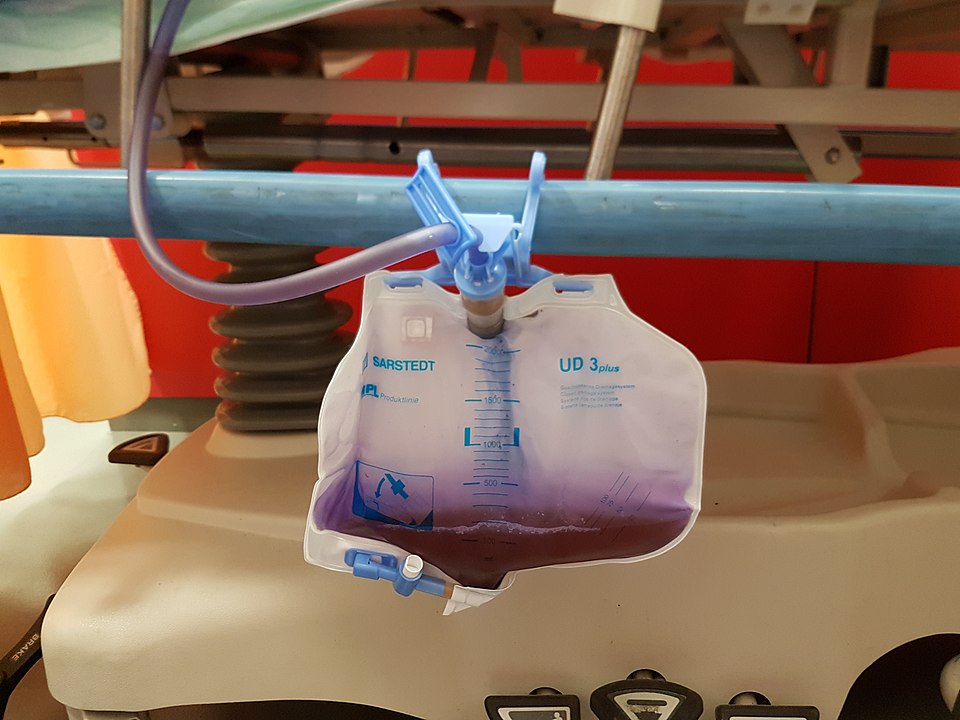Purple Urine Bag Syndrome: What You Need to Know About This Rare Illness

The purple urine bag syndrome or PUBS, a rare condition, is frequently linked to urinary tract infection or UTI.
Purple urine bag syndrome or PUBS is a rare condition, and not all people are aware of it. The illness was first reported in the late 1970s and is indicated by the urine's purple discoloration typically seen in chronically weakened patients and women who, according to studies, have long-term "indwelling urinary catheters."
Necessarily PUBS can be worrying for some patients, their family members, and health workers who are not aware of such linkage. In addition, this rare condition is frequently linked to urinary tract infection or UTI.
The urine bag's discoloration takes place because of the presence of "indigo and indirubin pigments" hastening and responding with both the urine bag and the catheter's synthetic materials.
ALSO READ: Premature Babies at Higher Risk of Experiencing Heart Ailments in Life, New Study Finds
Causes of PUBS
According to studies, the leading cause of the purple color remains unknown. There is no scientific proof available to explain why such a condition occurs.
More so, until now, research does not show it is linked to the kind or label of catheters or urine bags currently being used, although it can take place in all catheters.
Nevertheless, there are many notions about why such a condition happens. Some people perceive various bacteria found in urine that is causing the purple color.
Additionally, it has been reported as well, that "a slowed-down gut is enough" to enhance or augment the chances to develop PUBS.
'Tryptophan' Broken Down in the Body
In relation to this, other people believe it resulted from such change from which "tryptophan, an amino acid which many foods contain," is broken down in the body.
Scientific studies indicate that typically, "tryptophan is broken down in the small intestines," and any additional move, the same studies specify, to the large intestine.
Essentially, with constipation, which is usually found in individuals with injury in their spinal cord, "tryptophan" remains longer in the system.
The moment the said amino acid reaches or moves to the large intestine, it is perceived that bacteria respond with it to develop blue and red dyes.
And when such colors are mixed, they result in purple shade. Relatively the amount of color purple relies on the distinctive concentration of red and blue dye produced.
At times, the study said, it turns out to be "bluer." There are times too when it becomes redder, and another time, more of the color purple.
DON'T MISS THIS: A Benefit of Exercise That You Probably Haven't Heard Much About
Signs and Symptoms to Monitor
Other than discoloration in the catheter, urine, or urine bag, other indications or symptoms of PUBS can be akin to the signs seen in UTI.
An individual is said to have PUBS if he is experiencing increase spasms, fevers or chills, automatic dysreflexia, fatigue, nausea, "urinary leakage, or needing to use catheter more frequently," headache, cloudy urine with a foul odor, and blood in the urine.
People using indwelling urinary catheters are most likely to develop PUBS. Science and health experts said, the longer a urine bag is in place, "the darker the purple shade may turn out."
Other possible causes that may augment the chance of developing this rare condition include dehydration and constipation.
According to medical experts, PUBS can be prevented, primarily by avoiding UTIs. The best way to get rid of UTI, they emphasized, is by drinking lots of fluids.
Ideally, the experts continued, drinking up to 3000 ml of water daily will help prevent UTI. This is as much as up to "12 eight-ounce glasses each day."
IN CASE YOU MISSED THIS: Band-Aid Introduces Skin Tone-Shaded Bandages in Support for Black Communities
© MD News Daily.
